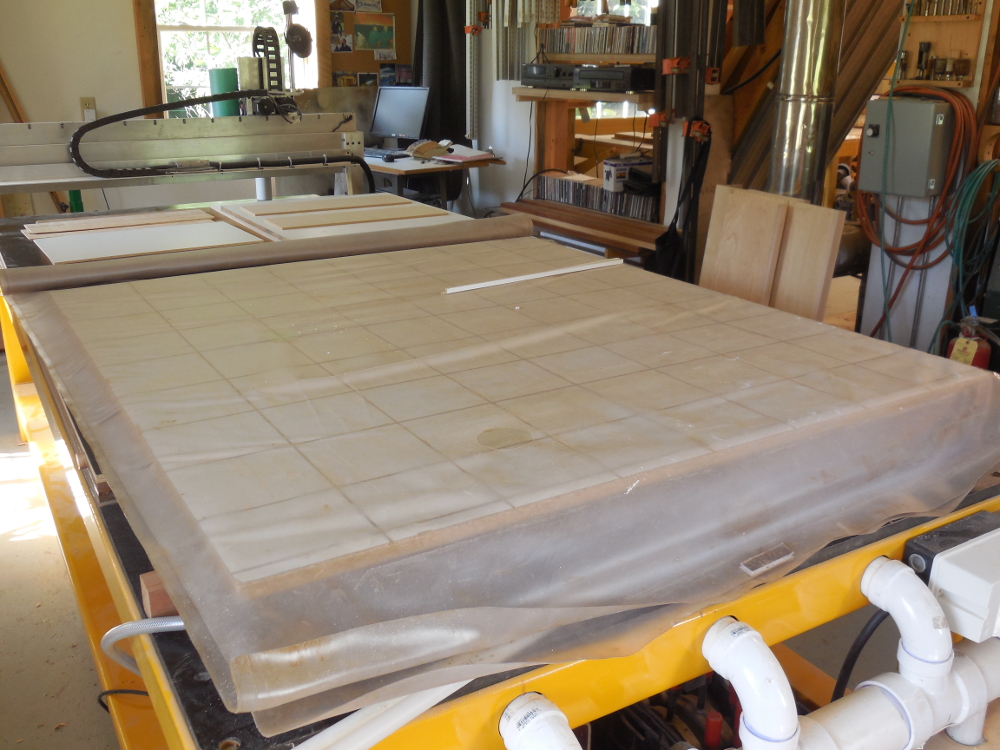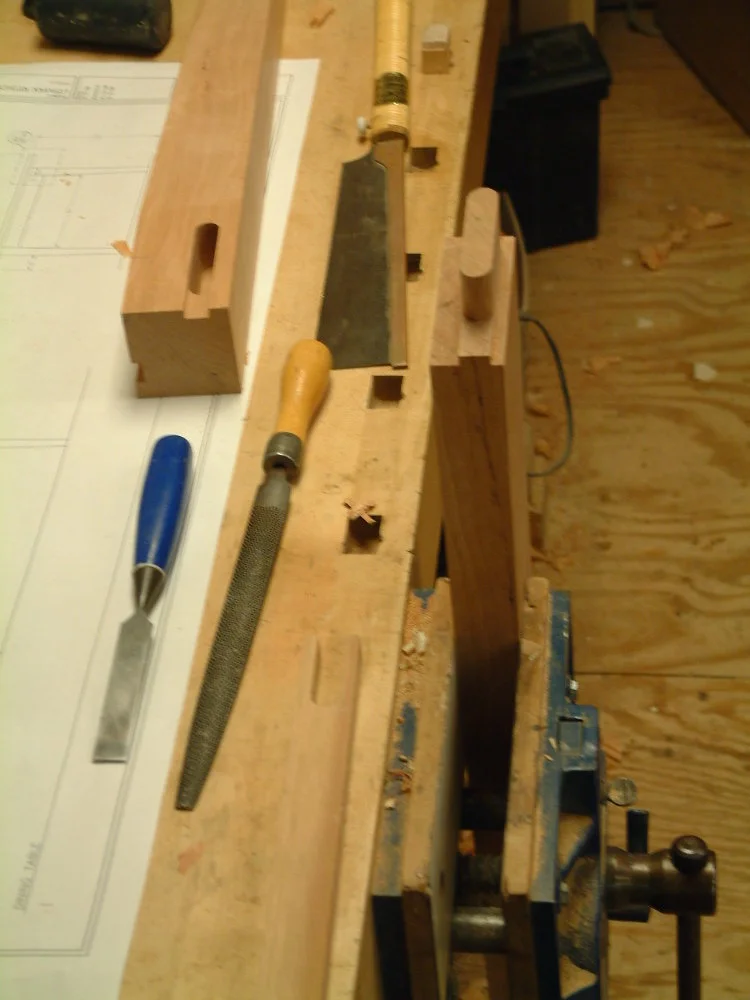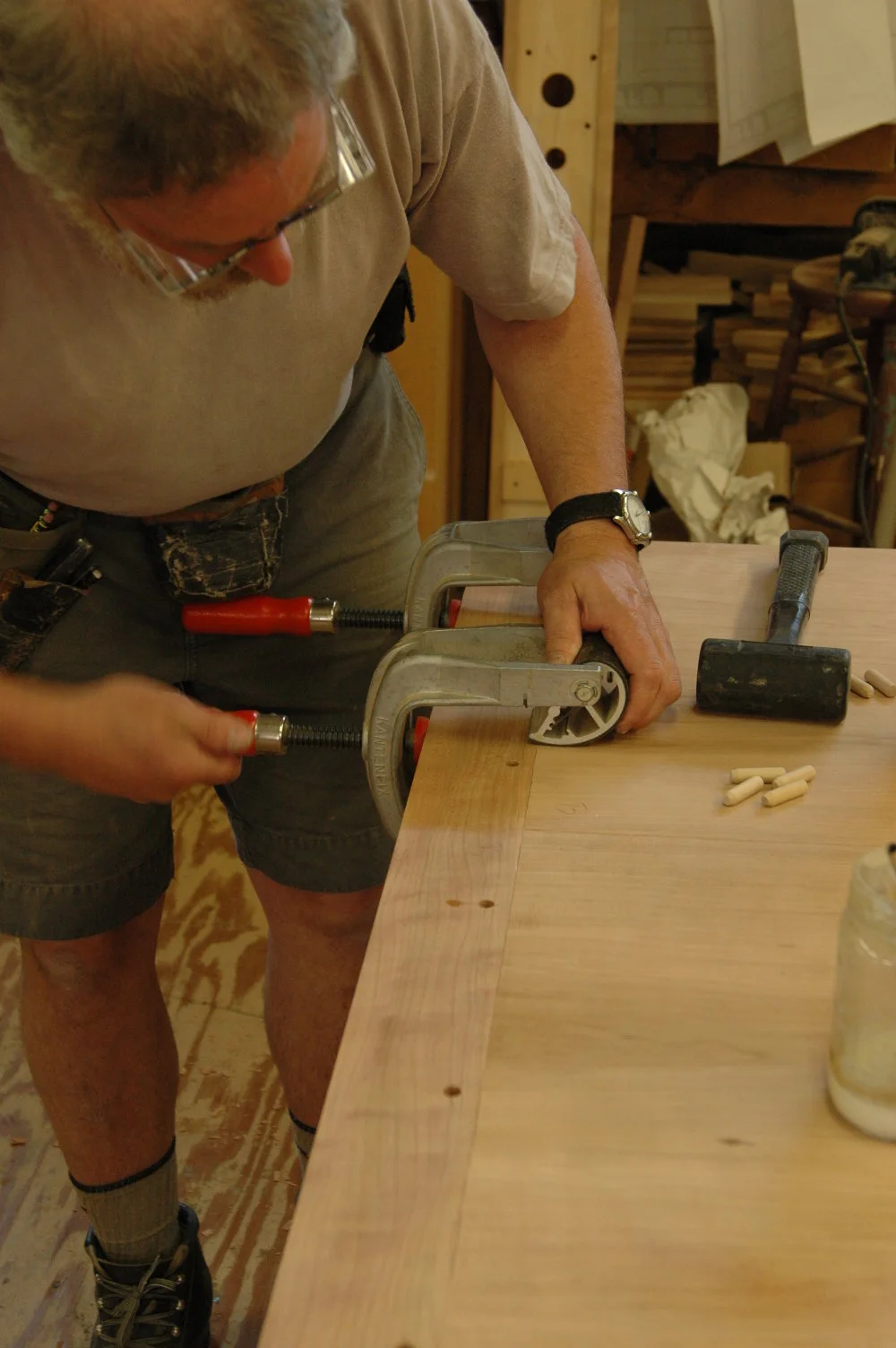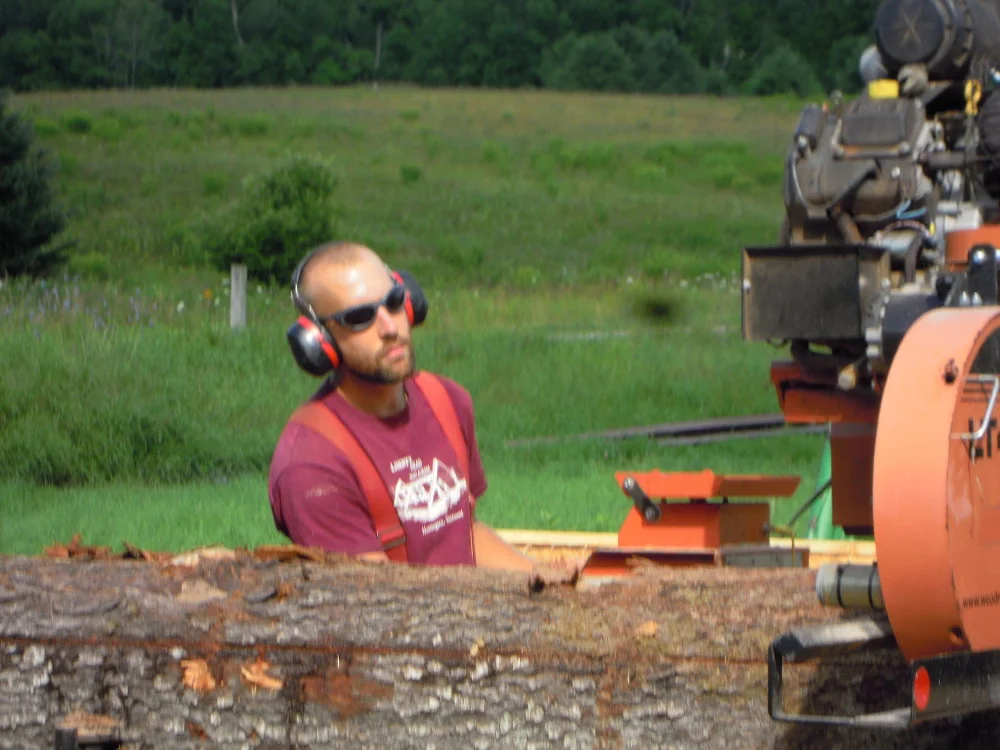Laying up Shop Made Veneer
/Resawing veneers from a 10" wide board
Shop made veneer, sawn from thicker planks, is an interesting option for the craftsman. It combines the stability and potential for patterning of thin commercial sliced veneer with greater toughness and the ability to use woods that are not readily available, in this case spalted maple from a dead hollow tree in our woodlot.
Sanded veneer leaves
My friends Chelsie and Betsy asked me to build a couple of kitchen cabinets incorporating spalted maple panels and cherry door frames and trim. I was glad to add some of my work to their unique organically crafted home, in part because I could barter some of my labor for Chelsie's inspired metal craft. They asked for a moderate level of spalting, a good choice as the heavily figured material can be overwhelming spread over a large area.
Vacuum press
I delved into my pile and found four 5/4 sequentially cut boards with spalting at one corner shading into curly quartersawn wood for the upper cabinet, plus a piece of 8/4 that would do for the base cabinet doors. The cherry also came from our woodlot, part of a batch my son milled out a couple of years ago when building his house. It's been fun to work with this material, partly for sentimental reasons but more due to the ability to find matched pieces that haven't been brutally kiln dried and full of tension.
1/4 hp rotary vane vacuum pump
The rough planks are faced on the jointer, planed to thickness and sliced to about 5/32" on my old 36" Crescent bandsaw. I take them over to the Birdseye Woodshop where I used to work to grind them down to 3/32" on the wide belt sander. When I get a bit ahead a carbide tipped bandsaw blade will replace the current bimetal one and allow me to get another slice out of each board.
Joining veneer leaves
Some panel faces were made up of two or more veneer leaves to get the width required. Where visible, the leaves were bookmatched to show a mirror pattern. Their jointed edges were taped together, flipped over, then hinged open and gluedbefore closing up the leaves to let the glue cure.
Cabinet end panel
Once the arrangement of the veneers for best effect is determined, they are cut close to size and glued on both sides of 1/4" medium density fiberboard (mdf), a flat, stable and inexpensive substrate widely used for veneering. I use Titebond extend, the most rigid version of that class of adhesives I have found, and press the panels in a vacuum bag. A small vacuum pump sucks the air out of a sealed vinyl envelope and subjects the contents to a high percentage of the available atmospheric pressure (about 10-11 lbs/square inch), providing a moderate but evenly distributed clamping pressure that is perfect for veneer.
Once pressed, the veneered panels are sized, sanded and the edges are rabbeted to fit into the door frames














